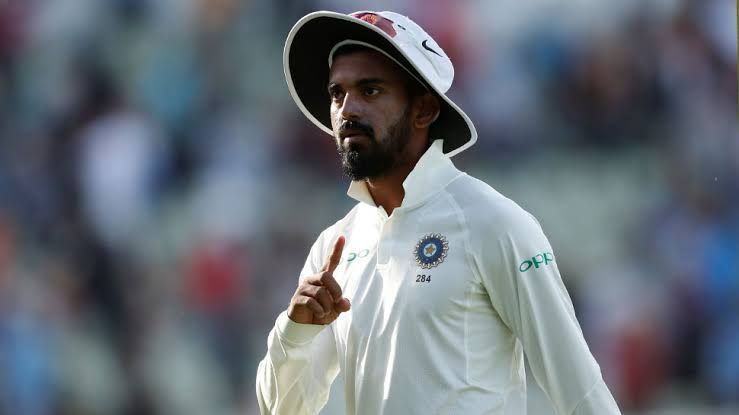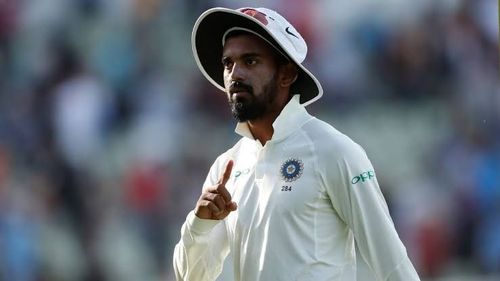
Opinion: How dropping KL Rahul could help him become a better player

KL Rahul is currently looked upon as a player who is anxious and has got the reputation of an 'all-or-nothing' player. Of late, Rahul has been in pretty poor form with the bat scoring just 466 runs (as of the date in which this was written) in 11 Test matches at a dissapointing average of 24.53, this year. He has the bad habit of searching for the ball outside off stump early in his innings, which the opposition has started to exploit.
There is no hiding to the fact that four (Sydney, Colombo, Kingston, Kennington Oval) out of his five Test centuries have come on foreign soil. However, his current form outside India does not speak in the affirmative.
In this article, we look if dropping KL Rahul from the Test team would do him any good by visiting past memories.
Failure is an invaluable teacher. In fact, our attitude to failure, to a setback, tells us a great deal about ourselves. In India for example, we tend to look at failure as a kind of death, a hauntingly sad tune that must play throughout our lives. The moment a player is dropped from the national team, the newspaper term him a 'Test discard', a terribly insensitive word. He is ignored at airports and stands alone in gatherings.
It is almost as if someone from the flock has strayed and must be made to stand in a corner henceforth. This leads to a fear of failure, which, as we know, is the fastest way to actually get there.
It needn't be like that though. A failure can be a friend for it can tell you where you are fallible, allow you to tighten your game, improve your career. The more mistakes you make, the more you learn about yourself and your ability and consequently, the better you can become.
The Australian cricketer Michael Clarke was dropped in 2005, a year after an outstanding debut in international cricket. In most places, it would have been viewed as a major setback, but intrestingly that very day Mark Waugh said, 'I said he'd be a captain in years to come and I still think he will be. He's got a great cricket brain. It's certainly not the end of the world for Michael Clarke, he's just got to get back and enjoy himself.'
Darren Lehmann wrote in The Daily Telegraph that Clarke's sacking would make him a better player, just as it did for the Waugh brothers. 'It's not the worst that can happen. He'll come back a better player. All good players go through it. They've obviously made the call he needs to go away and make runs and he'll do that on his ear. He'll be back, no doubt about it.'
These were statements of faith no doubt but also pointers that you must experience the rough with the smooth. Much later Clarke agreed, 'As much as you hate getting dropped, it certainly gave me some time to re-assess.' Initial failures can be like potholes on a road; in course of time you know where they are and can avoid them easily.
By late 2006, Clarke had scored back-to-back centuries in an Ashes series, was made vice-captain of the team and thereafter appointed captain of the T20 side and eventually ended up as a pretty successful Australian captain and the International Cricket Council Player of the year for 2013.
It's probably predictable that most people and teams would like to take credit for success. Failure on the other hand is the orphan that individuals are both too shy and too scared to talk about. That is the reason why success stories are so well-documented while failure is strictly limited to post-mortems. While the truth is that failure in fact gets analysed a lot more than success, it is often with the intention of putting the blame on person or his process, rather than learning from it.
Failure teaches a player two important things. It teaches them how not to repeat those mistakes, but more importantly teaches them a big thing and that is, the failure is ok. So people feel safe within the team. When they feel safe that failure is an ally, that failure will not bring personal penalization, and then they will be willing to take bigger steps forward.
Rahul Dravid often talks about the number of times leading players like him and Sachin Tendulkar have failed. If 50 is a benchmark for success, and that is a batting average that best aspire to have, then between them they managed it 218 times; out of 615 innings.
So, admittedly, by a fairly high bar set, they failed 397 times. And yet, they are regarded as legends and that is because they made the good times count. Life isn't measure a failure at a time but over a career and 218 successes counted for much more than the 397 failures!
After a good spell of playing for India, Ravichandran Ashwin was left out of the Indian team for the first test in Adelaide in Australia in late 2014. He says it caused him to look at himself closely, analyse his game and see what he could do better or, maybe, what he was doing wrong.
The introspection lead to one of his most successful phases. And it happened because he, like other successful people, used failure as a stepping stone, to become tougher rather than a moan about being victimized and looking for reasons that mollify you but do no good.
Therefore, there is no doubt that KL Rahul is one of the most exciting prospect India currently has and even India's former captain Sourav Ganguly has spoken very highly of him, however he needs to work on his weakness behind the scenes and come out as a better international player.
With age on his side, Rahul can work on his nerves and with a all-conditions' technique to go with it, he is an exciting prospect for India's long and challenging overseas season and he would like to reinforce his spot as a long term option for India as a premier Test opener.